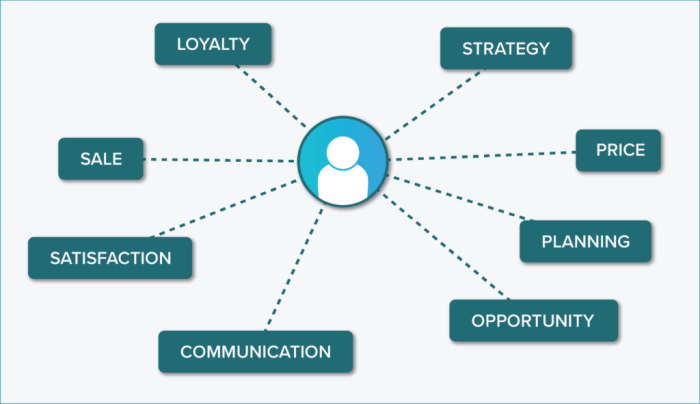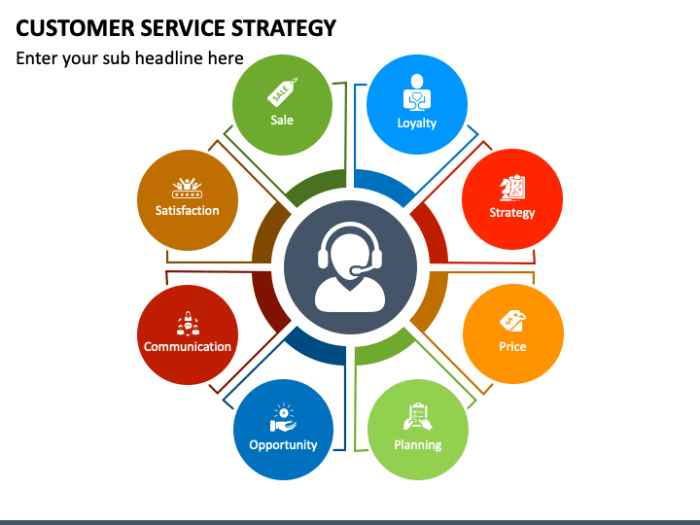Customer Service Strategies: Embark on a journey through the world of business tactics that drive customer loyalty and satisfaction to new heights.
From the importance of these strategies to the latest trends, discover how companies excel in the competitive landscape.
Importance of Customer Service Strategies
Customer service strategies play a vital role in the success of businesses today. By focusing on providing exceptional service to customers, companies can differentiate themselves from competitors and build a loyal customer base.
Examples of Successful Companies
- Amazon: Known for its customer-centric approach, Amazon has set the bar high for customer service with features like one-click ordering and fast delivery.
- Zappos: The online shoe retailer is renowned for its outstanding customer service, including free shipping and a 365-day return policy.
- Nordstrom: This department store is famous for its personalized service and generous return policy, which has helped build a strong customer following.
Impact on Customer Loyalty and Satisfaction
Effective customer service strategies can lead to increased customer loyalty and satisfaction. When customers feel valued and supported by a company, they are more likely to return for future purchases and recommend the business to others. By prioritizing customer service, companies can create long-lasting relationships with their customers and drive growth in the long run.
Types of Customer Service Strategies
In the world of customer service, various strategies are employed to meet the needs and expectations of customers. Let’s explore the different types of customer service strategies and their respective advantages and disadvantages.
Proactive Customer Service Strategy
Proactive customer service involves anticipating customer needs and addressing them before they even arise. This strategy focuses on preventing issues rather than just reacting to them. Companies that implement proactive customer service often reach out to customers with helpful information, updates, and personalized recommendations. An advantage of this strategy is that it can enhance customer loyalty and satisfaction. However, one disadvantage is that it requires significant time and resources to implement effectively.
Reactive Customer Service Strategy
Reactive customer service, on the other hand, involves responding to customer inquiries and issues as they come up. This strategy is more focused on addressing problems after they have occurred. Companies that rely on reactive customer service typically have customer support teams ready to assist customers when needed. An advantage of this strategy is that it can help resolve issues quickly.
However, a disadvantage is that it may not always prevent recurring problems.
Self-Service Customer Service Strategy
Self-service customer service allows customers to find solutions to their problems on their own using resources provided by the company. This can include FAQs, online tutorials, and troubleshooting guides. Companies that offer self-service options aim to empower customers to resolve issues independently. An advantage of this strategy is that it can reduce the workload on customer support teams and provide customers with instant assistance.
However, a disadvantage is that some customers may prefer speaking to a live representative for more personalized support.These are just a few examples of the types of customer service strategies that companies can implement to meet the diverse needs of their customers.
Implementing Customer Service Strategies

Implementing customer service strategies involves a series of steps to ensure that the chosen strategies are effectively put into action to enhance customer satisfaction and loyalty.
Developing Effective Customer Service Strategies
When developing customer service strategies, it is essential to first identify the specific needs and preferences of your target customers. This involves conducting thorough market research and analyzing customer feedback to understand their expectations.
- Define clear objectives: Clearly Artikel the goals and objectives of the customer service strategies to align them with the overall business goals.
- Allocate resources: Ensure that the necessary resources, including technology, training, and support systems, are in place to implement the strategies effectively.
- Create an action plan: Develop a detailed action plan that Artikels the specific steps to be taken to implement the customer service strategies.
Role of Employee Training
Employee training plays a crucial role in ensuring the successful implementation of customer service strategies. Well-trained employees are better equipped to handle customer inquiries, resolve issues efficiently, and deliver exceptional service.
- Provide ongoing training: Offer continuous training programs to keep employees updated on the latest trends, techniques, and customer service best practices.
- Empower employees: Encourage employees to take ownership of customer interactions and empower them to make decisions to resolve issues effectively.
- Measure training effectiveness: Regularly assess the impact of training programs on employee performance and customer satisfaction to identify areas for improvement.
Monitoring and Evaluating Customer Service Strategies
Monitoring and evaluating the effectiveness of customer service strategies is essential to ensure that they are meeting the intended goals and delivering the desired results.
- Collect customer feedback: Regularly gather feedback from customers through surveys, reviews, and direct interactions to gauge their satisfaction levels.
- Track key performance indicators (KPIs): Monitor KPIs such as customer retention rates, response times, and customer satisfaction scores to measure the impact of the strategies.
- Implement improvements: Use the feedback and performance data to identify areas for improvement and make necessary adjustments to the customer service strategies.
Emerging Trends in Customer Service Strategies

Customer service strategies are constantly evolving to meet the changing needs and preferences of consumers. In today’s digital age, businesses are leveraging emerging trends to enhance their customer service experiences and stay ahead of the competition.
AI Chatbots
AI chatbots are revolutionizing customer service by providing instant responses to queries and issues. These virtual assistants can handle a wide range of customer interactions, from answering basic questions to resolving complex problems. Businesses can benefit from AI chatbots by improving response times, reducing human error, and increasing customer satisfaction.
Social Media Engagement
Social media has become a key platform for customer service, allowing businesses to engage with customers in real-time and address concerns quickly. By leveraging social media monitoring tools and platforms, companies can track customer feedback, respond to inquiries promptly, and build stronger relationships with their audience.
Personalized Customer Experiences, Customer Service Strategies
Personalization is a growing trend in customer service, as businesses strive to create tailored experiences for each individual customer. By utilizing customer data and analytics, companies can offer personalized recommendations, targeted promotions, and customized solutions that meet the unique needs of their customers.
While these emerging trends offer numerous benefits for businesses, there are also potential challenges and risks to consider. For example, AI chatbots may struggle to understand complex queries or provide empathetic responses, leading to frustrated customers. Social media engagement can also backfire if not managed properly, as negative feedback and public complaints can quickly damage a company’s reputation. Additionally, personalization efforts may raise privacy concerns if customer data is not handled securely.